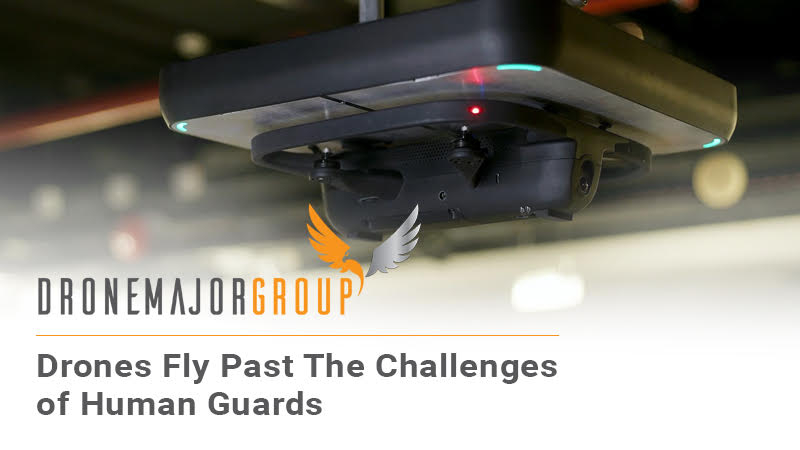Editorial Feature
Drones Fly Past The Challenges of Human Guards
Words By: Indoor Robotics
With each passing year, it becomes less and less logical to continue using human labour for routine security tasks when AI technologies offer a proven, superior alternative.
For security and risk mitigation, human security teams monitor CCTVs or mounted webcams, respond to alarms and tripped sensors, and conduct foot patrols. focus on the patrols. A diligent guard uses all five senses, to spot subtle problems, makes judgment calls, and adapts to times and locations requiring special attention. While they leverage those “human” skills, the list of disadvantages is disturbing.
- People don’t scale. One guard can only be in one place at one time. If an intruder appears, a water pipe bursts, or equipment overheats moments after a guard has passed by, discovery is delayed
- People are biological. We need to eat, work a third of a day, get sick, need vacations, use the restroom — all time a company pays for.
- People are … only human. It’s hard to blame a guard in a static, repetitive, under-stimulating environment for getting bored or inattentive.
- People can’t fly, shrink, or visually detect heat. Overheating equipment, a hard-to-spot leak in a sprawling or a little-trafficked area, and a concealed burglar often aren’t visible to the human eye or within sight of a guard.
Here’s the solution to eliminate those weaknesses, save money, and get better results: A fleet of fully-autonomous indoor drones. Around the world, drone platforms are available in a low-risk, cost-effective, pay-as-you-go RaaS (“robot as a service”!) model. Driving a $2.27B market, indoor drones outperform humans and sensors/CCTV from almost every perspective:

- Autonomous drones do scale. At a fraction of the cost of onboarding or hiring, add drones to your fleet inexpensively for simultaneous coverage; each independently patrols at different frequencies/schedules.
- Minimal “time off”. Aside from brief, strategically-coordinated, automated recharging breaks, they work 24/7; no vacation or snack/bathroom breaks.
- Cold, calculating automatons. Drones diligently record – suspicious movement, aberrations the AI recognizes, temperature changes, open windows or doors. They aren’t biased or get distracted, or get too bored to stay focused. They aren’t forgetful – they record everything.
- Robots have superpowers. Flying high above ground level and squeezing into small areas is critical in many industrial and commercial environments. Heat and air quality sensors and vision in poor light exceed human perception A drone-based patrol platform can integrate with existing management platforms and work alongside personnel. It can merge data, send alerts, and provide a reliable 360-degree view of the premises.
In the offices of one of our clients, a software company, CCTV, motion detectors, smoke and heat sensors, and standard contact alarms were sending out ongoing false alerts, requiring investigation, day or night. With our Tando™ system, they know that any intruder considering a break-in will think twice with a camera-armed drone hovering in the window. Especially at night or on weekends, security officers have a live, 360-degree view of the office.
The future of robotic drone patrols is here … don’t let it whiz past!





